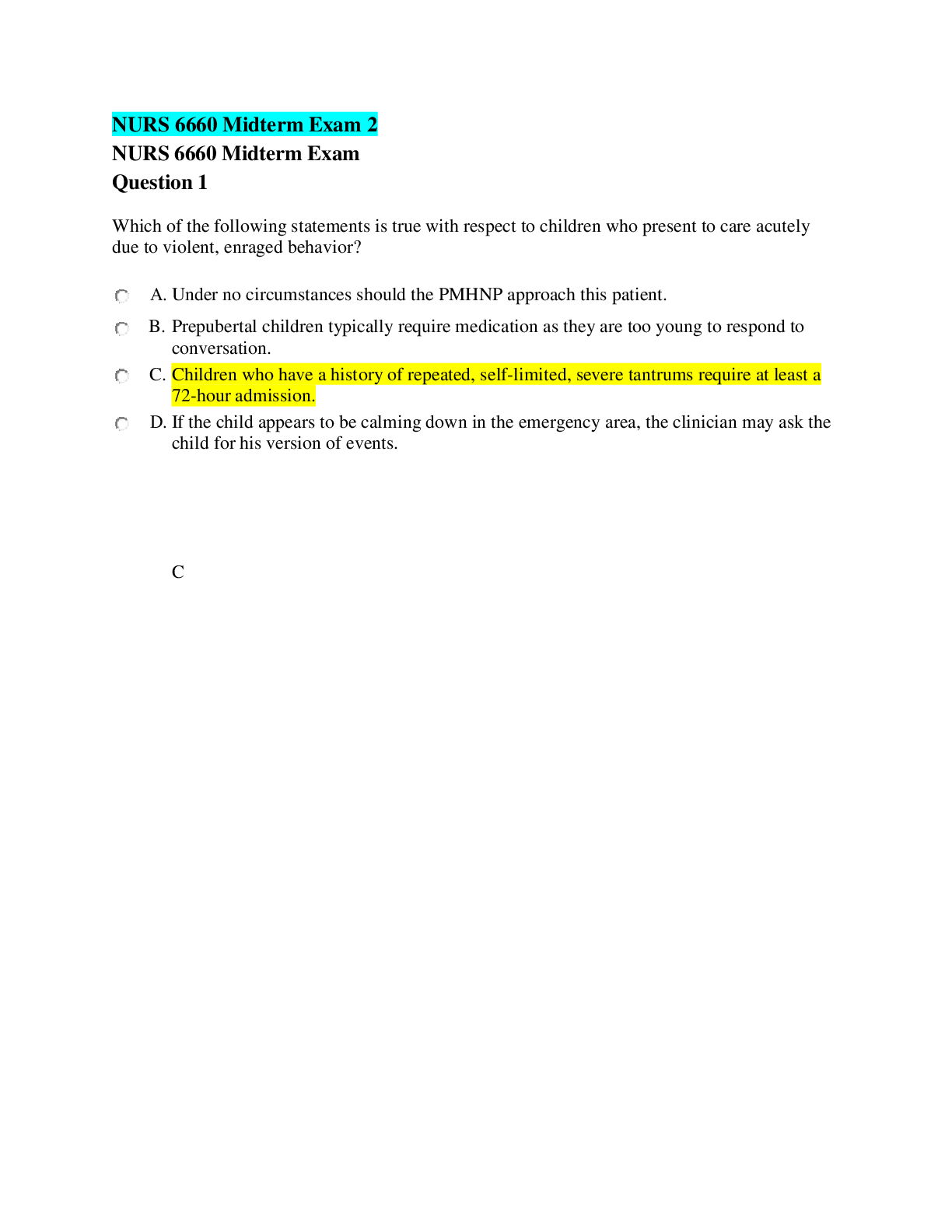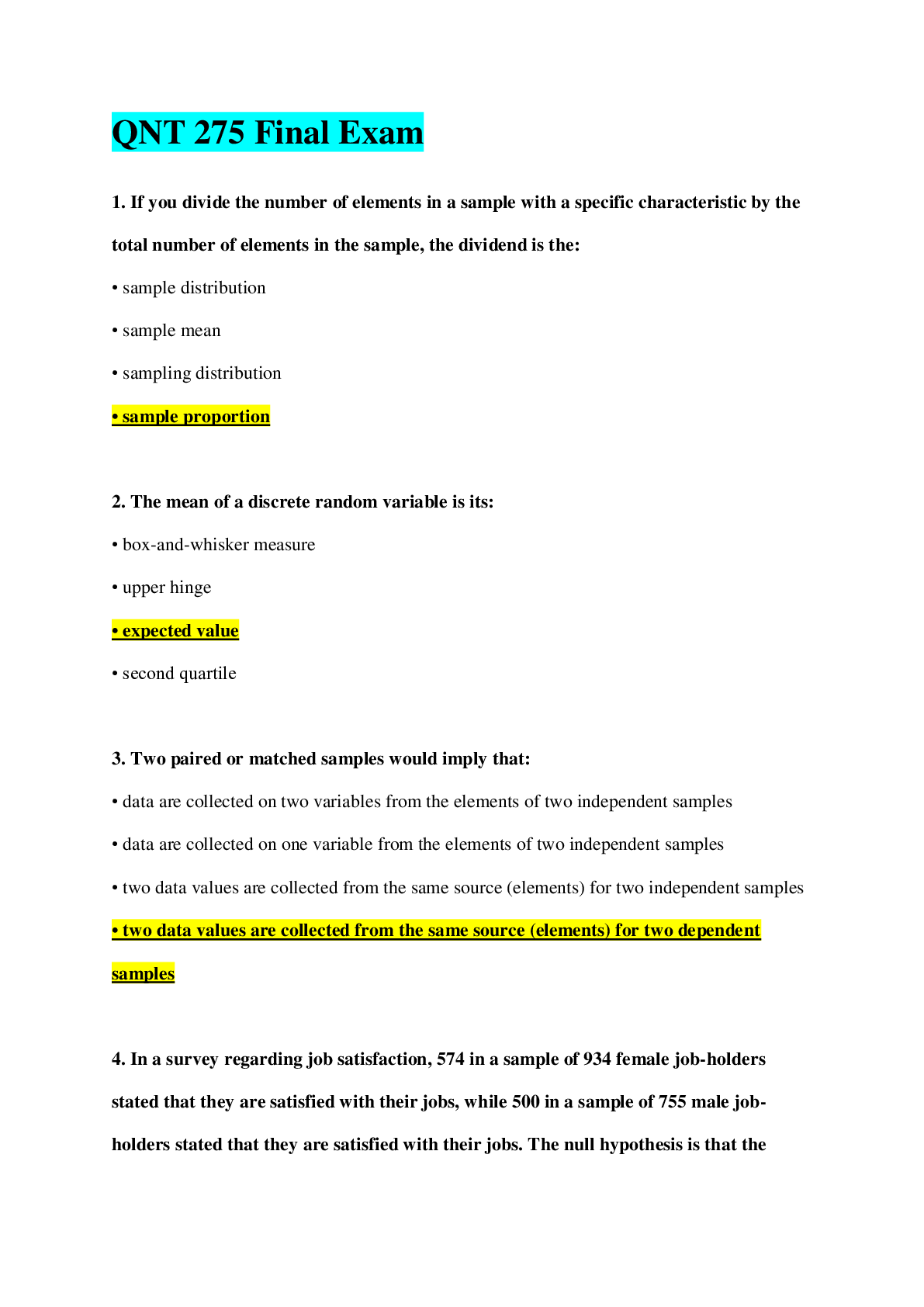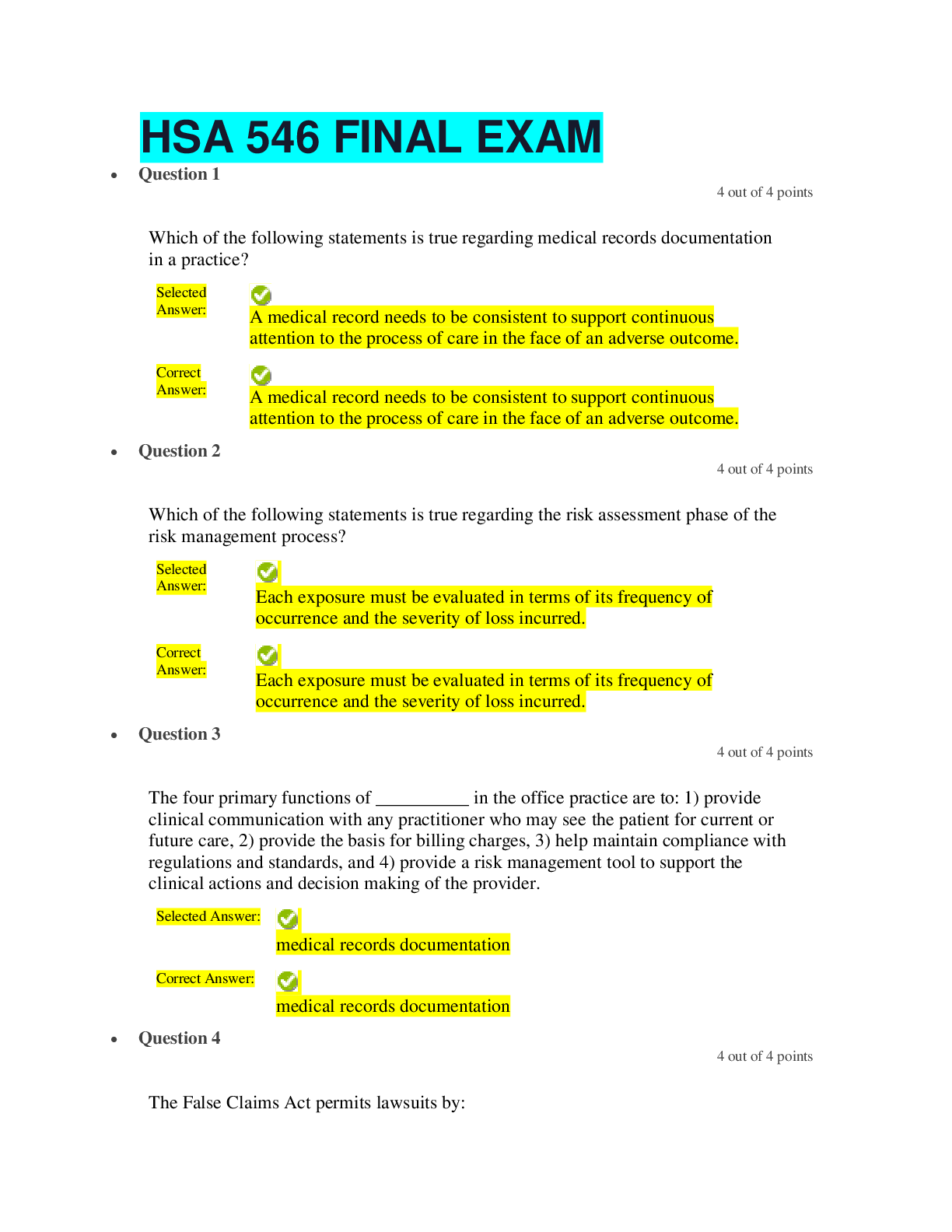Finance > EXAM > FIN 515 FINAL EXAM : Complete answers guide, DeVry University, Keller Graduate School of Management. (All)
FIN 515 FINAL EXAM : Complete answers guide, DeVry University, Keller Graduate School of Management.
Document Content and Description Below
FIN 515 Final Exam 1. (TCO A) In the United States, the most common type of business by number of businesses is the _____. (Points : 5) sole proprietorship C corporation S corporation LLC Que... stion 2.2. (TCO A) Sole proprietorships have all of the following advantages except (Points : 5) easy to set up. single taxation of income. limited liability. ownership and control are not separated. Question 3.3. (TCO B) Which of the following would cause the future value of an annuity to decrease? (Points : 5) Reducing the number of payments. Increasing the number of payments. Increasing the interest rate. Decreasing the liquidity of the payments. Question 4.4. (TCO B) Which of the following is an annuity due? (Points : 5) A typical car loan. A typical mortgage. A typical apartment rental agreement. A credit card balance. 5. (TCO G) If you were a manager of a company, which of the three right side components of the DuPont Identity would you want to increase and which would you want to decrease, other things being equal? Give a specific example for how to do that for each of the three.(Points : 20) 6. (TCO D) A stock has just paid a dividend and will pay a dividend of $3.00 in a year. The dividend will stay constant for the rest of time. The return on equity for similar stocks is 14%. What is P0?(Points : 20) 7. (TCO D) A stock has just paid a dividend has declared an annual dividend of $12.00 to be paid one year from today. The dividend is expected to grow at a 7% annual rate. The return on equity for similar stocks is 12%. What is P0?(Points : 20) 8. (TCO D) A bond has 5 years to maturity and has a YTM of 8%. Its par value is $1,000. Its semiannual coupons are $50. What is the bonds current market price?(Points : 10) 9. (TCO D) A bond currently sells for $1,000 and has a par of $1,000. It was issued two years ago and had a maturity of 10 years. The coupon rate is 7% and the interest payments are made semiannually. What is its YTM?(Points : 10) 10. (TCO D) Using examples, explain the difference between systematic risk and nonsystematic risk. Explain why the distinction is important for both investors and issuers of stock.(Points : 30) 11. (TCO E) A company has 10 million shares outstanding trading for $7 per share. It also has $300 million in outstanding debt. If its equity cost of capital is 15%, and its debt cost of capital is 9%, and its effective corporate tax rate is 40%, what is its weighted average cost of capital?(Points : 30) 12. TCO A) What is the difference between capital structure and capital budgeting? Explain and give an example of a capital structure decision and an example of a capital budgeting decision.(Points : 25) 13. (TCO H) What is the Cash Conversion Cycle (CCC)? Name the components of the CCC and explain why the CCC is important to business.(Points : 30) 14. (TCO F) A company has the opportunity to do any, none, or all of the projects for which the net cash flows per year are shown below. The company has a cost of capital of 12%. Which should the company do and why? You must use at least two capital budgeting methods. Show your work. [Show More]
Last updated: 2 years ago
Preview 1 out of 6 pages

Buy this document to get the full access instantly
Instant Download Access after purchase
Buy NowInstant download
We Accept:

Reviews( 0 )
$10.00
Can't find what you want? Try our AI powered Search
Document information
Connected school, study & course
About the document
Uploaded On
Mar 22, 2020
Number of pages
6
Written in
Additional information
This document has been written for:
Uploaded
Mar 22, 2020
Downloads
0
Views
101



















.png)

.png)

.png)


